Tuesday, August 11th 2020

Thermaltake Intros TG-30 and TG-50 Thermal Compounds with Honeycomb Pattern Stencil Applicators
Thermaltake today rolled out the TG-30 and TG-50 thermal interface materials. Both appear to be silver particle-based viscous compounds, although the company did not put out their composition. Both the TG-30 and TG-50 come in 4 g syringes. The TG-30 offers thermal conductivity of 4.5 W/m-k, while the TG-50 offers 8 W/m-k.
A unique selling point with the two is the inclusion of a honeycomb pattern stencil and a tiny spatula, which lets you apply the paste onto your CPU IHS in a neat honeycomb pattern for a Thermaltake-recommended Z-height of the application, and uniform spread under pressure from the cooling solution. Thermaltake also includes two alcohol rubs for clearing out its compound from the IHS and cooler. The company didn't reveal pricing of the two.
A unique selling point with the two is the inclusion of a honeycomb pattern stencil and a tiny spatula, which lets you apply the paste onto your CPU IHS in a neat honeycomb pattern for a Thermaltake-recommended Z-height of the application, and uniform spread under pressure from the cooling solution. Thermaltake also includes two alcohol rubs for clearing out its compound from the IHS and cooler. The company didn't reveal pricing of the two.
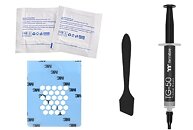
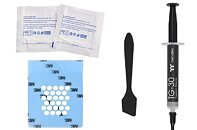
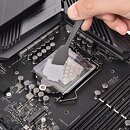
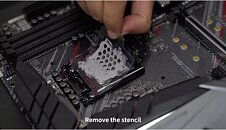
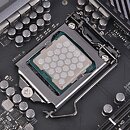
29 Comments on Thermaltake Intros TG-30 and TG-50 Thermal Compounds with Honeycomb Pattern Stencil Applicators
are they actually going to claim this improves thermals? and believe others will believe that?
honestly if this sells to even 1 person in the world....jeez
This is a very wasteful product - both of money and of thermal paste.
Hundreds of tests and videos exist to prove that this method works great and I've removed maybe 10,000 heatsinks in my lifetime and in almost every single one of them the paste was squeezed into a thin, even layer across the whole contact surface and oozed out over the edges.
In short, it doesn't really matter where you apply the paste as long as you put enough where it needs to be. For Zen2 I actually put a smaller pea in the middle of each chipset, so two for a 3800X or lower, and three for a 3900X or above. I have no doubt that a single blob in the middle of the IHS would perform identically after a day or so, once the heatsink has had time to squeeze the excess goop out to the edges anyway.
And they waste less TIM.
Something like this but maybe just to protect the sides would be the best. I should make one from credit card myself...
and my usages brings this total to 11,000 hehehehe :D
Look, obviously this isn't for those that know what they are doing when assembling a computer. If it helps those that need a little help with this process then I don't see the harm. If a little kid were riding a bike down the sidewalk you wouldn't yell at them and say that's not how you ride a bike then snatch the training wheels off,.....this is no different.
As long as it doesn't break anything then its not a big deal.
If Thermaltake really wanted to be innovative here they probably could have come up with an application design that would apply microdots of TIM on the heat spreader in one shot (depending on the size of the heat spreader). That would have been slightly more impressive but still just as unnecessary.
Seriously, the most useless product of the year? I've always just put a sane amount of paste to a CPU/GPU/chipset die and that's it.
You'll have to make a heart shaped cutout yourself tho...
'nuff said :)
If you can't accomplish this, then you have absolutely NO business building a computer in the 1st place, IMHO